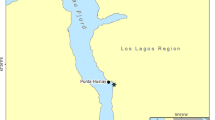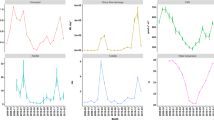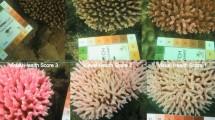Abstract
Growth anomalies (GAs) are protuberant masses found on many coral species; their presence may be linked to increased ocean temperatures and bleaching stress. In 2014 and 2015, Hawai‘i experienced back-to-back beaching events, after which an increased number of growth anomalies were noted on massive Porites colonies. GAs and normal tissues were sampled from 19 P. evermanni and P. lobata colonies in 2015 and from each of 15 separate P. evermanni colonies on six dates from June 2016 to August 2017, encompassing two annual reproductive cycles. Compared to normal tissue, GAs had significantly larger corallites in all dimensions in both P. evermanni and P. lobata. GAs of P. evermanni also had reduced amounts of lipid and lower functional lipid ratios across all time points. Across tissue types, lipid content was generally higher in winter (December) and spring (April) than in summer months (June/July), but was not correlated with reproductive condition. While GAs are generally non-reproductive in other corals, GA tissues in P. evermanni contained elevated numbers of oocytes in 2017. Compared to normal tissue, GAs in P. evermanni had aberrant corallite morphology and likely committed proportionally more energy to growth and less to energy storage.
Similar content being viewed by others
References
Aeby GS, Williams GJ, Franklin EC, Haapkyla J, Harvell CD, Neale S, Page CA, Raymundo L, Vargas-Angel B, Willis BL, Work TM, Davy SK (2011) Growth anomalies on the coral genera Acropora and Porites are strongly associated with host density and human population size across the Indo-Pacific. PLoS One 6:e16887
Anthony KRN, Fabricius KE (2000) Shifting roles of heterotrophy and autotrophy in coral energetics under varying turbidity. J Exp Mar Bio Ecol 252:221–253
Arai T, Kato M, Heyward A, Ikeda Y, Iizuka T, Maruyama T (1993) Lipid composition of positively buoyant eggs of reef building corals. Coral Reefs 12:71–75
Bak RPM (1983) Neoplasia, regeneration and growth in the reef building coral Acropora palmata. Marine Biol 77:221–227
Bates D, Machler M, Bolker B, Walker S (2015) Fitting linear mixed-effects models using lme4. J Stat Softw 67:1–48
Bellwood DR, Hughes TP, Folke C, Nystrom M (2004) Confronting the coral reef crisis. Nature 429:827–833
Breitbart M, Bhagooli R, Griffin S, Johnston I, Rohwer F (2005) Microbial communities associated with skeletal tumors on Porites compressa. FEMS Microbial Letters 243:431–436
Bruno JF, Selig ER, Casey KS, Page CA, Willis BT, Harvell CD, Sweatman H, Melendy AM (2007) Thermal stress and coral cover as drivers of coral disease outbreaks. PLoS Biol 5:e124
Burns JHR, Takabayashi M (2011) Histopathology of growth anomaly affecting the coral, Montipora capitata: implications on biological function and population viability. PLoS One 6:e28854
Burns JHR, Gregg TM, Takabayashi M (2013) Does coral disease affect Symbiodinium? Investigating the impacts of growth anomalies on symbiont photophysiology. PLoS One 8:e72466
Cantin NE, Lough JM (2014) Surviving coral bleaching events: Porites growth anomalies on the Great Barrier Reef. PLoS One 9:e88720
Cheney DP (1975) Hard tissue tumors of scleractinian corals. Adv Exp Med Biol 64:77–87
Coles SL, Seapy DG (1998) Ultra-violet absorbing compounds and tumorous growths on Acroporid corals from Bandar Khayran, Gulf of Oman, Indian Ocean. Coral Reefs 17:195–198
Coles SL, Jokiel PL, Lewis CR (1976) Thermal tolerance in tropical versus subtropical Pacific reef corals. Pac Sci 30:155–166
Conlan JA, Rocker MM, Francis DS (2017) A comparison of two common sample preparation techniques for lipid and fatty acid analysis in three different coral morphotypes reveals quantitative and qualitative differences. PeerJ 5:e3654
Conlan JA, Humphrey CA, Severati A, Francis DS (2018) Intra-colonial diversity in the scleractinian coral, Acropora millepora: identifying the nutritional gradients underlying physiological integration and compartmentalized functioning. PeerJ 6:e4239
Cooper TF, Gilmour JP, Fabricius KE (2009) Bioindicators of changes in water quality on coral reefs: review and recommendations for monitoring programs. Coral Reefs 28:589–606
Cooper TF, Lai M, Ulstrup KE, Saunders SM, Flematti GR, Radford B, van Oppen MJH (2011) Symbiodinium genotypic and environmental controls on lipids in reef building corals. PLoS One 6:e20434
Domart-Coulton IJ, Sinclair C, Hill R, Tambutte S, Puverel S, Ostrander GK (2004) A basidiomycete isolated from the skeleton of Pocillopora damicornis (Scleractinia) selectively stimulates short-term survival of coral skeletogenic cells. Mar Biol 144:583–592
Domart-Coulton IJ, Traylor-Knowles N, Peters E, Elbert D, Downs CA, Price K, Stubbs J, McLaughlin S, Cox E, Aeby GS, Brown PR, Ostrander GK (2006) Comprehensive characterization of skeletal tissue growth anomalies of the finger coral Porites compressa. Coral Reefs 25:531–543
Eakin CM, Liu G, Gomez AM, De La Cour JL, Heron SF, Skirving WJ, Geiger EF, Tirak KV, Strong AE (2016) Global coral bleaching 2014-2017: status and an appeal for observations. Reef Encounter 31:20–26
Edmunds PJ, Davies PS (1986) An energy budget for Porites porites (Scleractinia). Mar Biol 92:339–347
Farre B, Cuif J, Dauphin Y (2010) Occurrence and diversity of lipids in modern coral skeletons. Zool 113:250–257
Fitt WK, McFarland FK, Warner ME, Chilcoat GC (2000) Seasonal patterns of tissue biomass and densities of symbiotic dinoflagellates in reef corals and relation to coral bleaching. Limnol Oceanogr 45:677–685
Forsman Z, Wellington GM, Fox GE, Toonen RJ (2015) Clues to unraveling the coral species problem: distinguishing species from geographic variation seen in Porites across the Pacific with molecular markers and microskeletal traits. PeerJ 3:1–21
Gateno D, Leon A, Barki Y, Cortes J, Rinkevich B (2003) Skeletal tumor formations in the massive coral Pavona clavus. Mar Ecol Prog Ser 258:97–108
Grottoli AG, Rodrigues LJ, Palardy JE (2006) Heterotrophic plasticity and resilience in bleached corals. Nature 440:1186–1189
Halekoh U, Højsgaard S (2014) A Kenward-Roger Approximation and Parametric Bootstrap Methods for Tests in Linear Mixed Models - The R Package pbkrtest. J Stat Softw 59:1–30
Harland AD, Davies PS, Fixter LM (1992) Lipid content of some Caribbean corals in relation to depth and light. Mar Biol 113:357–361
Harland AD, Navarro JC, Davies PS, Fixter LM (1993) Lipids of some Caribbean and Red Sea corals: total lipids, wax esters, triglycerides, and fatty acids. Mar Biol 117:113–117
Harvell CD, Mitchell CE, Ward JR, Altizer A, Dobson AP, Ostfeld RS, Samuel MD (2002) Climate warming and disease risks for terrestrial and marine biota. Science 296:2158–2162
Henrichs S, Patten NL, Feng M, Strickland D, Waite AM (2013a) Which environmental factors predict seasonal variation in the coral health of Acropora digitifera and Acropora spicifera at Ningaloo Reef. PLoS One 8:e60830
Henrichs S, Patten NL, Allcock RJN, Saunders SM, Strickland D, Waite AM (2013b) Seasonal variations in energy levels and metabolic processes of two dominant Acropora species (A. spicifera and A. digitifera) at Ningaloo Reef. Coral Reefs. https://doi.org/10.1007/s0038-013-1027-z
Hunter CL (1999) First records of coral disease and tumors on Hawaiian reefs. In: Maragos JE, Grober-Dunsmore R (Eds) Proceedings of the Hawaiian Coral Reef Monitoring Workshop, pp 73–97
Imbs AB (2013) Fatty acids and other lipids of corals: composition, distribution, and biosynthesis. Russian J Mar Biol 39:153–168
Imbs AB, Latyshev N, Dautova T, Latypov Y (2010) Distribution of lipids and fatty acids in corals by their taxonomic position and presence of zooxanthellae. Mar Ecol Prog Ser 409:65–75
Irikawa A, Casareto BE, Suzuki Y, Agostini S, Hidaka M, van Woesik R (2011) Growth anomalies on Acropora cytherea. Mar Poll Bull 62:1702–1707
Jokiel PL, Coles SL (1990) Response of Hawaiian and other Indo-Pacific reef corals to elevated temperature. Coral Reefs 8:155–162
Kaczmarsky L, Richardson LL (2007) Transmission of growth anomalies between Indo-Pacific Porites corals. J Invertebr Patho 94:218–221
Le Campion-Alsumard T, Golubic S, Priess K (1995) Fungi in corals: symbiosis or disease? Interaction between polyps and fungi causes pearl-like skeletal biomineralization. Mar Ecol Prog Ser 117:137–147
Lenth RV (2018) Estimated Marginal Means, aka Least Squares Means. R Package version 1.1. https://CRAN.R-project.org/package=emmeans
Loya Y, Bull G, Pichon M (1984) Tumor formations in scleractinian corals. Helgol Meeresunters 37:99–112
Mallela J, Hetzinger S, Halfar J (2015) Thermal stress markers in Colpophyllia natans provide an archive of site-specific bleaching events. Coral Reefs. https://doi.org/10.1007/s00338-015-1350-7
Maynard JA, Anthony KRN, Harvell CD, Burgman MA, Beeden R, Lamb JB, Heron SF, Willis BL (2011) Predicting outbreaks of a climate-driven coral disease on the Great Barrier Reef. Coral Reefs 30:485–495
McClanahan TR, Weil E, Maina J (2009) Strong relationship between coral bleaching and growth anomalies in massive Porites. Global Change Biol 15:1804–1815
Muscatine L, McCloskey LR, Marian RE (1981) Estimating the daily contribution of carbon from zooxanthellae to coral animal respiration. Limnol Oceanogr 25:601–611
Neves EG (2000) Histological analysis of reproductive trends of three Porites species from Kāne‘ohe Bay, Hawai‘i. Pac Sci 54:195–200
Oku H, Yamashiro H, Onaga K, Iwasaki H, Takara K (2002) Lipid distribution in branching coral Montipora digitata. Fish Sci 68:517–522
Oku H, Yamashiro H, Onaga K, Sakai K, Iwasaki H (2003) Seasonal changes in the content and composition of lipids in the coral Goniastrea aspera. Coral Reefs 22:83–85
Pandolfi JM, Bradbury RH, Sala E, Hughes TP, Bjorndal KA, Cooke RG, McArdle D, McClenachan L, Newman MJH, Paredes G, Warner RR, Jackson JBC (2003) Global trajectories of the long-term decline coral reef ecosystems. Science 301:955–958
Peters EC, Halas JC, McCarty HB (1986) Calicoblastic neoplasms in Acropora palmata, with a review of reports on anomalies of growth and form in corals. J Natl Cancer Inst 76:895–912
R Core Team (2016) R: a language and environment for statistical computing. R Foundation for Statistical Computing, Vienna, Austria. https://www.R-project.org/
Richmond RH, Hunter CL (1990) Reproduction and recruitment of corals: comparisons among the Caribbean, the Tropical Pacific, and the Red Sea. Mar Ecol Prog Ser 60:185–203
Rodrigues LJ, Grotolli AG (2007) Energy reserves and metabolism as indicators of coral recovery from bleaching. Limnol Oceanogr 52:1874–1882
Rodrigues JF, Grotolli AG, Pease TK (2008) Lipid class composition of bleached and recovering Porites compressa Dana, 1846 and Montipora capitata Dana, 1846 corals from Hawai‘i. J Exp Mar Biol Ecol 358:136–143
Saunders SM, Radford B, Bourke SA, Thiele Z, Bech T, Mardon J (2005) A rapid method for determining lipid fraction ratios of hard corals under verifying sediment and light regimes. Environ Chem 2:331–336
Schneider CA, Rasband WS, Eliceiri KW (2012) NIH Image to ImageJ: 25 years of image analysis. Nature Meth 9:671–675
Squires DF (1965) Neoplasia in a coral? Science 148:503–505
Stimson JS (1987) Location, quantity, and rate of change in quantity of lipids in tissue of Hawaiian hermatypic corals. Bull Mar Sci 41:889–904
Stimson J (2011) Ecological characterization of coral growth anomalies on Porites compressa in Hawai‘i. Coral Reefs 30:133–142
Sutherland KP, Porter JW, Torres C (2004) Disease and immunity in Caribbean and Indo-Pacific zooxanthellate corals. Mar Ecol Prog Ser 266:273–302
Takabayashi M, Gregg TM, Farah E, Burns J, Teves K, Cody NH (2008) The prevalence of skeletal growth anomaly and other afflictions in scleractinian corals at Wai‘opae, Hawai‘i. Proc 11th Int Coral Reef Symp 18:820–824
White P (1965) Abnormal corallites. Science 150:77–78
Williams GJ, Work TM, Aeby GS, Knapp IS, Davy SK (2011) Gross and microscopic morphology of lesions in Cnidaria from Palmyra Atoll, central Pacific. J Invertebr Pathol 106:165–173
Willis B, Page CA, Dinsdale DA (2004) Coral disease on the Great Barrier Reef. In: Rosenberg E, Loya Y (eds) Coral Health and Disease. Springer, Tel Aviv Israel, pp 69–104
Work TM, Aeby GS, Coles SL (2008) Distribution and morphology of growth anomalies of Acropora in the Indo-Pacific. Dis Aquat Organ 78:255–264
Yamashiro H, Yamamoto M, van Woesik R (2000) Tumor formation on the coral Montipora informis. Dis Aquat Organ 41:11–17
Yamashiro H, Oku H, Onaga K (2005) Effect of bleaching on lipid content and composition in Okinawan corals. Fish Sci 71:448–453
Yamashiro H, Oku H, Higa H, Chinen I, Sakai K (1999) Composition of lipids, fatty acids and sterols in Okinawan corals. Comp Biochem Physiol Part B 122:397–407
Yamashiro H, Oku H, Onaga K, Iwasaki H, Takara K (2001) Coral tumors store reduced level of lipids. J Exp Mar Biol Ecol 265:171–179
Acknowledgements
Funding for this study was provided by the National Science Foundation (OCE-1505158). We thank Shreya Yadav, Scott Goldberg, Erika Johnston, and Tara Hetz for assistance in the field, Jim Berger for the histology sectioning, and Thierry Work for assistance with histology analysis. We also thank two anonymous reviewers for their helpful comments on this manuscript.
Author information
Authors and Affiliations
Corresponding author
Ethics declarations
Conflict of interest
On behalf of all authors, the corresponding author states that there is no conflict of interest.
Additional information
Topic Editor Morgan S. Pratchett
Publisher's Note
Springer Nature remains neutral with regard to jurisdictional claims in published maps and institutional affiliations.
Electronic supplementary material
Below is the link to the electronic supplementary material.
Rights and permissions
About this article
Cite this article
Sale, T.L., Hunter, C.L., Hong, C. et al. Morphology, lipid composition, and reproduction in growth anomalies of the reef-building coral Porites evermanni and Porites lobata. Coral Reefs 38, 881–893 (2019). https://doi.org/10.1007/s00338-019-01811-x
Received:
Accepted:
Published:
Issue Date:
DOI: https://doi.org/10.1007/s00338-019-01811-x













